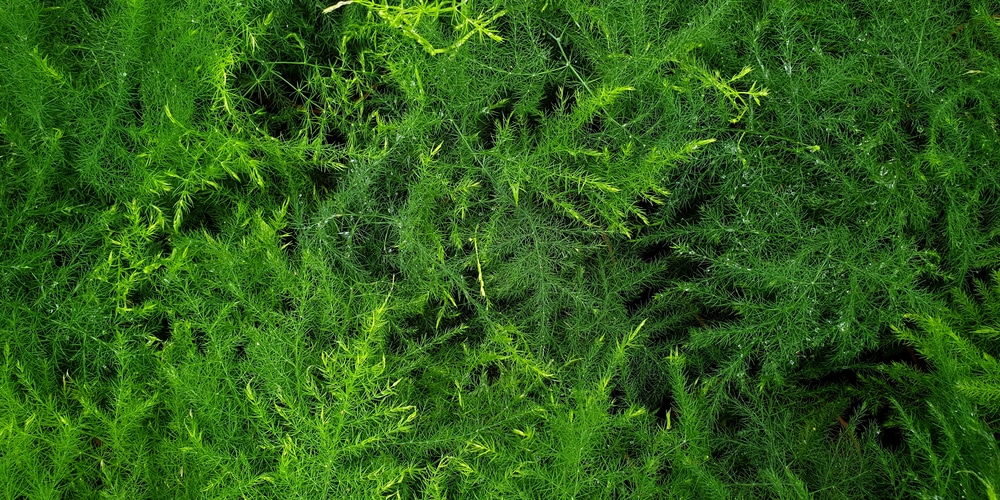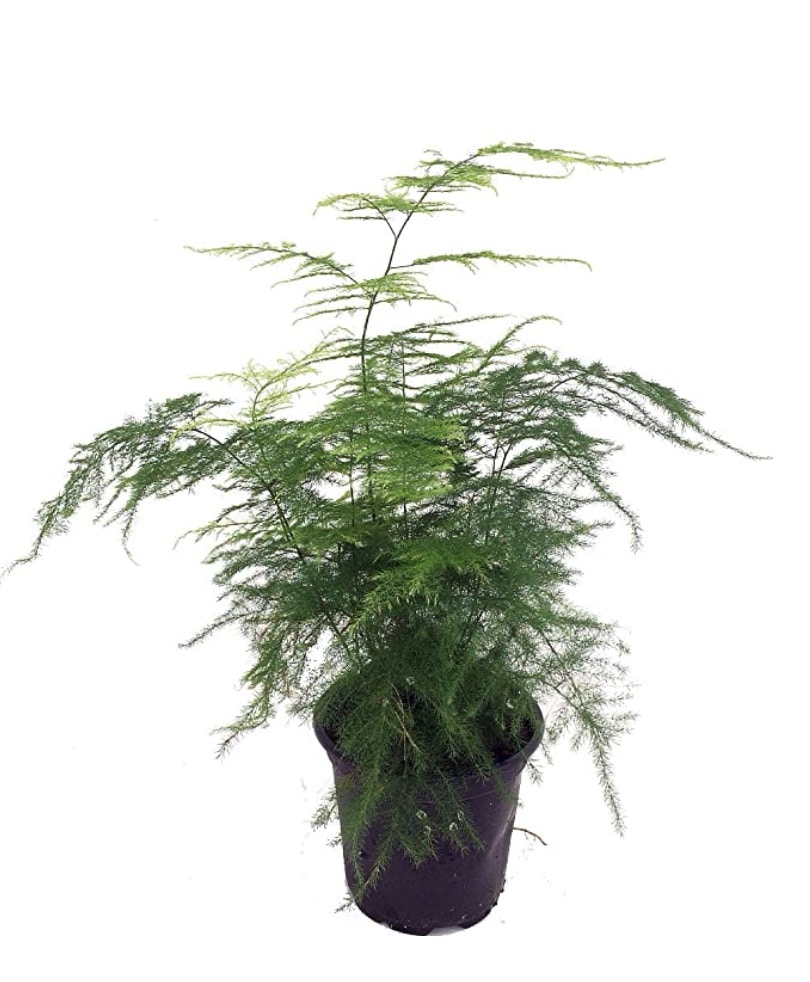The plumosa fern (asparagus fern plumosa) is a beautiful feathery plant that’s low maintenance and easy to care for. It can be grown outdoors in UADA zones 10 and 11. This fern is also commonly referred to as the asparagus fern and is a perennial vine that originates from South Africa.
This unique plant gets its name due to its feathery foliage that is shaped like fern leaves. These plants can be kept as houseplants or grown outdoors as part of a landscape. The plants are low-maintenance and can be grown in a hanging basket and along fence lines. You should only grow the plumosa fern outdoors if you live in an area that doesn’t get frost, as these plants aren’t very cold tolerant. Let’s look at how to grow and care for a plumosa fern.
What is a plumosa fern?
The plumosa fern is a house plant that has foliage that’s very similar to a fern. It has short feathery branches that are light green in color and is a perennial vine. Plumosa ferns bloom during the late spring and summer with attractive white or pink flowers. They then produce red or black berries in the fall.
How to Care for a Plumosa Fern
Plumosa ferns are relatively easy to look after and make a great addition to any home or garden. They look lovely whatever the season as they flower and then produce berries. This plant, when correctly cared for, will add color and texture to your home or garden. Here are some tips to help care for your plumosa fern so that it thrives:
Soil and Planting Location
Plumosa fern requires nutrient-rich soil if it’s to grow well and look its best. This plant shouldn’t be left sitting in soggy soil, as it will suffer from root rot. It’s, therefore, best to choose soil that’s well-draining. You can make your own soil mix by using a standard house plant soil and adding some loam and coarse sand. You may also like to add a layer of stones or gravel to the bottom of your pot, as this will allow excess water to drain away.
This plant likes to grow in direct sun and partial shade. If you’re growing the plant indoors (they’d be great in an office with no windows), it shouldn’t be left on a sunny windowsill as it may get too hot and can get burned even through glass.
When planting in an outdoor location, find a spot that has partial shade. This plant does best if it has the morning sun and then shade in the afternoon. Before planting plumosa fern, it’s a wise idea to test the soil’s pH range. You can do this with a home test kit. Plumosa ferns require acidic soil with a pH of between 5.5 and 6.5. If the pH of your soil range is too high (here’s how to test it), you can mix some ground rock sulfur into the ground two weeks before planting your plumosa fern.
Watering and Fertilizer Requirements
Asparagus fern plumosa is fairly drought-resistant but shouldn’t be neglected. Be careful not to overwater your plant, but keep the soil moist throughout the growing season. You can also fertilize your plant in the spring using a 10-10-10 fertilizer.
Pruning
You may have noticed that some of your plant’s leaves and branches have begun to look old or turn brown. These can be pruned in the early spring to improve the appearance and shape of your plant. Pruning will also help to stimulate new growth.
Pests
Plumosa ferns can be affected by aphids and spider mites and often become infested by these pests. You should check your plant regularly and use an insecticidal spray if you notice any pests. Ensure you also spray the undersides of leaves as these pests can hide.
Fungal Infections
Be careful not to overwater your plumosa fern or plant them in an area that’s prone to waterlogging. Wet conditions can make the plant more susceptible to various fungal diseases such as crown rot, sooty mildew, or root rot.
Plumosa ferns suffering from fungal infections will often have foliage that’s yellowing, has turned brown, and feels dry. You may also see mold or white fungus around the plant’s stem. If your plant is suffering from a fungal infection, the best thing to do is to remove and dispose of infected plants and then use a fungicide to treat the soil so that other plants don’t get infected.
Conclusion
Plumosa ferns are attractive plants with lovely feathery leaves. They are popular houseplants but can also be grown outdoors in the right conditions. Asparagus fern plumosa looks great throughout the year as they bloom and then produce berries. They are generally considered easy to care for but may be affected by spider mites and aphids.

